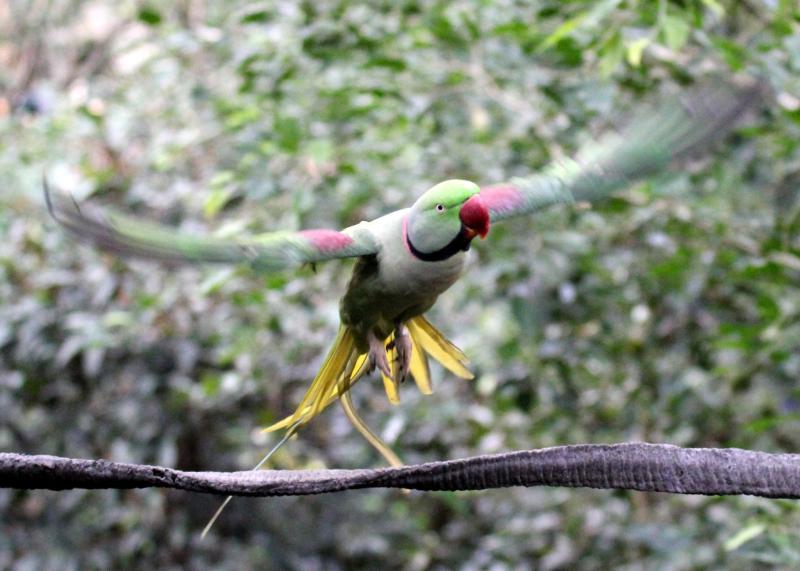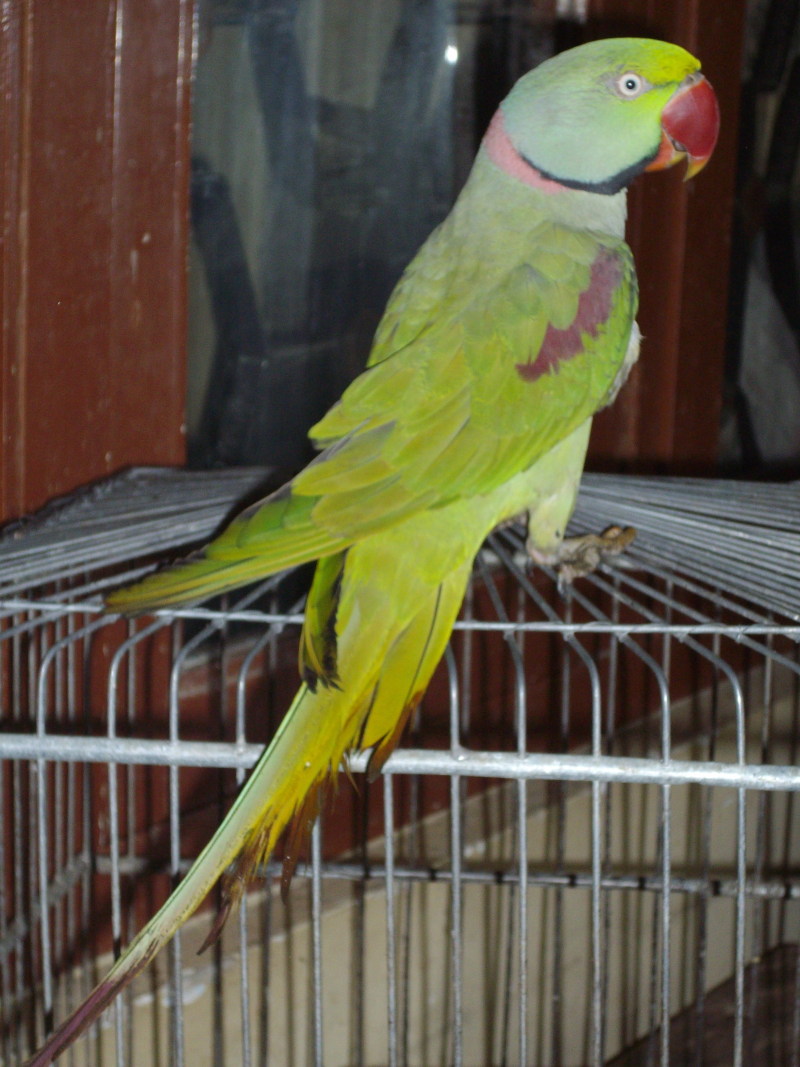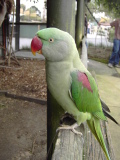Colours
Distinguishing features
The Alexandrine Parakeet is the largest species of all Parakeet (small Parrot with long tail) species, thus often being the largest Parrot in their native range.
It is mainly green with a blue-grey sheen on its cheeks and nape, particularly in males. The abdomen is yellowish-green, the upperside of the middle tail feathers is blueish-green, the upperside of the external tail feathers is green while the underside of the tail feathers are all yellow.
All Alexandrine Parakeets (irrespective of age, gender and/or sub-species) boldly display a maroon (reddish-brown) patch at the top of their wing coverts (commonly called 'shoulder' patch). The shoulder patch is seen in parakeets at their first feathering before fledging. The lower and upper mandibles are red with yellow tips. The adult's irises are yellowish-white and the periopthalmic rings are light grey.
The legs are grey except in the P. e. siamensis (Laos' or Siamese sub-species) where they are yellowish-grey.
The species is dimorphic in adulthood (3 years and older). The immatures are monomorphic and are similar but duller in appearance to that of the adult females. Adult males always show pitch-black neck rings and large pink bands on their napes (commonly called nape bands). Often males only display a narrow band of blueish-grey above their bold pink nape-band.
Adult females frequently show neck ring shadows that are anywhere between light and dark shades of grey. Females never display true black feathers in their neck-rings.
Immatures of either genders are very similar to adult females but, as with all genuine parakeet species, the young Alexandrine Parakeets always display shorter middle-tail feathers and thus shorter tails than adults. The adult feathering usually is acquired between 18–30 months of age, but may sometimes show up as young as 12 and/or as old as a full 36 months of age. Consequently, it may be difficult to identify the sex of Alexandrine Parakeets by sight with absolute certainty until they are a full 36 months of age.
The young males can be identified as soon as they display one (or more) pitch-black feathers of their neck rings and/or one (or more) pink feathers of their nape bands. Often, the young males develop their neck rings and nape bands in two or sometimes three successive moulting seasons. Adult parakeets with neither pitch-black feathers in their neck rings nor pink feathers in their nape bands are usually females. (Wikipedia)
Size
- Up to 60 cm (Length of specimen)
Wingspan
- Wingspan data is not yet available.
Synonyms
Distribution
Diet
It feeds on seeds, nuts, fruits, berries, buds, flowers and nectar. (Wikipedia)




